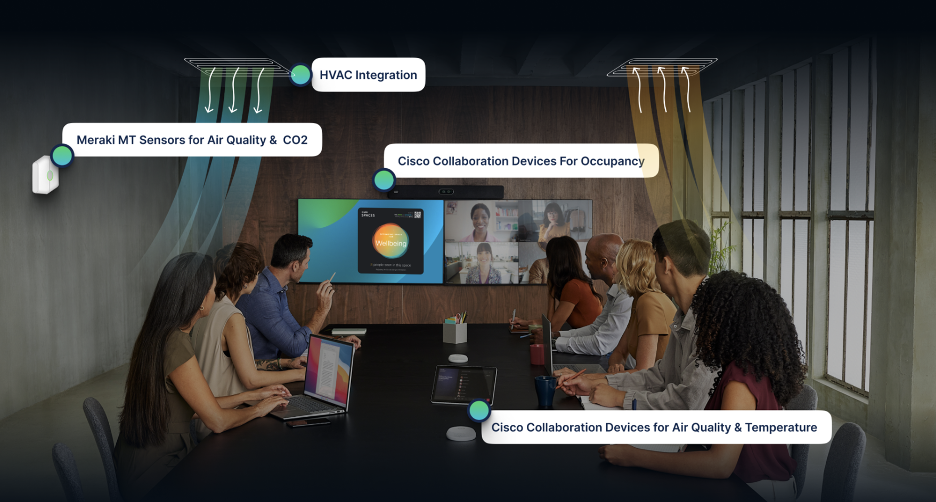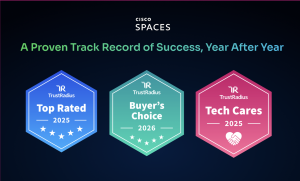
In an era where technology seamlessly blends with our daily lives, the Internet of Things (IoT) is reshaping how we interact with our environments. Among its diverse applications, IoT environmental monitoring stands out as a game-changer, especially for hospitals, manufacturing facilities, and modern office buildings, where maintaining optimal indoor conditions is critical. Let’s take a closer look at the transformative role of IoT in indoor environmental monitoring.
What Is IoT Environmental Monitoring?
IoT environmental monitoring involves the use of connected sensors and devices to measure conditions such as temperature, humidity, air quality, and other environmental factors, in real time. These sensors transmit collected data to cloud platforms, enabling users to set thresholds, receive alerts, and generate actionable insights for improved decision-making. By leveraging this technology, businesses can ensure regulatory compliance, enhance occupant safety, and optimize operational efficiency within indoor spaces. Its role is pivotal in creating healthier and more sustainable environments across industries.
Key Features of IoT Environmental Monitoring
Effective IoT monitoring systems combine advanced sensors, reliable connectivity, and powerful analytics tools to deliver real-time insights. These are the core capabilities that make these systems indispensable for monitoring indoor environments.
Real-Time Environmental Monitoring
Environmental monitoring devices such as Bluetooth Low Energy (BLE) sensors, continuously collect data on environmental parameters. This constant stream of information provides up-to-the-second visibility, which is crucial for mission-critical environments like hospitals and manufacturing floors. Precise environmental control can have significant implications for safety, compliance, and operational success in these environments.
Automated Alerts Based on Environmental Parameters
IoT environmental monitoring systems can automatically trigger alerts—via SMS, email, dashboards, or app notifications—when conditions exceed predefined thresholds. These real-time alerts enable immediate responses, preventing unsafe or noncompliant scenarios and ensuring critical environments remain within optimal operating conditions.
Historical Data Logging & Actionable Insights
IoT environmental monitoring platforms often include historical dashboards that log data over time. This helps users identify trends, recurring issues, or patterns in environmental conditions. This stored data supports informed long-term decision-making on HVAC optimization, energy efficiency, and maintaining compliance, ultimately enhancing both performance and sustainability.
Cloud-Based Environmental Monitoring Solutions
Cloud platforms enable users to access and manage data across multiple locations through a unified interface. This ensures seamless visibility and control. This is especially valuable for distributed teams or organizations with multi-site operations, as it allows centralized monitoring, collaboration, and decision-making from anywhere in the world.
Sensor Integration & Interoperability
Compatibility with a wide range of sensors and systems is critical for creating scalable, flexible monitoring solutions. Cisco Spaces supports integration with various third-party sensors, enabling vendor-agnostic deployments that adapt to diverse environments and evolving business needs, without locking users into a single ecosystem.
Benefits of IoT Environmental Monitoring
Improving Air Quality & Occupant Comfort
Monitoring air quality, temperature, and CO2 levels ensures safer and more comfortable environments for employees, patients, or guests by maintaining optimal conditions and reducing health risks. In workspaces or public areas, this leads to improved productivity, satisfaction, and overall well-being, fostering a positive and efficient atmosphere.
Meeting Indoor Health and Safety Regulations
Environmental monitoring data enables facilities to stay compliant with health and safety standards for air quality, thermal conditions, and infection prevention. Automated data logging and real-time alerts help ensure audit readiness, streamline reporting, and minimize the risk of regulatory violations, safeguarding both occupants and organizations.
Increasing Operational Efficiency with Energy Monitoring
Long-term environmental data helps identify HVAC inefficiencies, detect system failures early, and automate maintenance requests, ensuring systems operate optimally. By leveraging these insights, organizations can reduce energy waste, lower costs, and minimize their environmental footprint, boosting overall operational efficiency.
Centralizing Visibility Across Environmental Monitoring Systems
Centralizing all environmental data on a single platform provides enterprises with holistic visibility across campuses, office networks, or regional operations. This unified approach simplifies monitoring, streamlines decision-making, and ensures consistent compliance and performance across diverse locations, enhancing efficiency and scalability.
Common Use Cases for IoT Environmental Monitoring
Environmental monitoring is utilized across industries to track and manage critical conditions, ensuring regulatory compliance, efficiency, and safety. While specific goals vary—such as preserving product integrity in warehouses or optimizing energy usage in smart buildings—IoT solutions provide scalable tools for diverse operational needs.
Monitoring Sensitive Environments in Healthcare
Hospitals rely on IoT sensors to monitor critical conditions such as temperature, humidity, and air quality in areas like pharmacies, operating rooms, clean rooms, and patient care spaces. These systems ensure the safe storage of vaccines and temperature-sensitive medicines while supporting infection control protocols to protect patients and staff. Additionally, real-time monitoring helps organizations meet stringent regulatory compliance standards, reducing risks and ensuring healthcare quality.
Protecting Products & Processes in Manufacturing
Environmental monitoring in manufacturing safeguards equipment by detecting conditions like excessive humidity, dust, or temperature fluctuations that can lead to damage or downtime. It also ensures the integrity of temperature-sensitive goods by maintaining precise storage or production conditions, preventing spoilage and waste. Additionally, these systems help maintain safe working environments on production floors by monitoring factors like air quality, temperature, and noise levels, supporting worker health and regulatory compliance.
How Cisco Spaces Enables Environmental Monitoring
Sensor-Agnostic Architecture
Cisco Spaces boasts of a sensor-agnostic architecture that supports a wide range of third-party BLE environmental sensors, providing users with the flexibility to integrate devices that best meet their specific industry requirements. This open approach ensures seamless adaptation to various monitoring needs without being restricted to specific sensor brands.
Real-Time Alerts & Threshold Controls
It allows users to set custom thresholds for environmental data and receive automated alerts whenever conditions exceed safe or predefined limits. This feature enables proactive management and rapid response to potential issues, ensuring optimal and operational environmental conditions are maintained.
Centralized Dashboard & Remote Visibility
Cisco Spaces offers a centralized dashboard that allows users to access real-time and historical environmental data across multiple locations. This centralized visibility can be accessed from anywhere, providing the convenience of managing and monitoring environments remotely.
No Additional Gateway Hardware Required
With Cisco Catalyst and Meraki access points doubling as BLE gateways, there is no need for additional proprietary beacons or dedicated infrastructure. This capability simplifies deployment and reduces costs by utilizing existing network hardware.
Integration with Other Cisco Spaces Apps
The platform facilitates integration of environmental data with occupancy, location, and asset tracking insights, offering a comprehensive view of smart building performance. By combining diverse data streams, Cisco Spaces enables more informed decision-making and enhanced facility management.
Discover the Power of Real-Time Environmental Monitoring with Cisco Spaces
IoT environmental monitoring plays a crucial role in creating healthier spaces, ensuring regulatory compliance, and improving operational efficiency across industries. By leveraging real-time data, organizations can proactively address environmental concerns, optimize workplace conditions, and minimize risks—all of which are vital to driving business outcomes and enhancing wellness.
Cisco Spaces empowers organizations to achieve scalable and flexible environmental monitoring through its sensor-agnostic platform, easily integrated with existing Cisco infrastructure, such as Catalyst and Meraki access points. This eliminates the need for additional hardware while providing centralized visibility and actionable insights across locations—all accessible through an intuitive dashboard.
Ready to take monitoring your indoor environment to the next level? Take a product tour to explore how Cisco Spaces helps monitor indoor conditions, enhance compliance, and improve workplace wellness.


